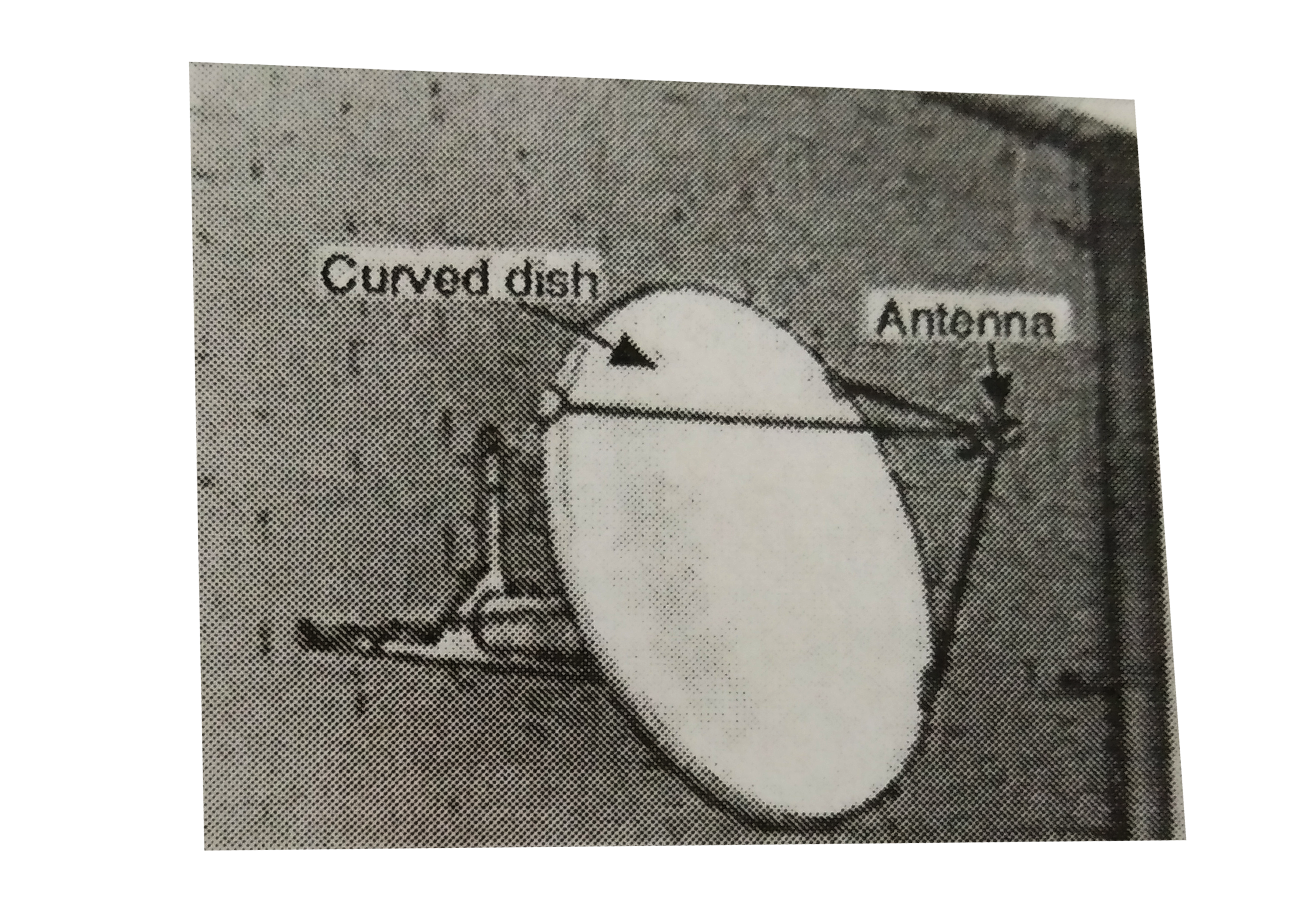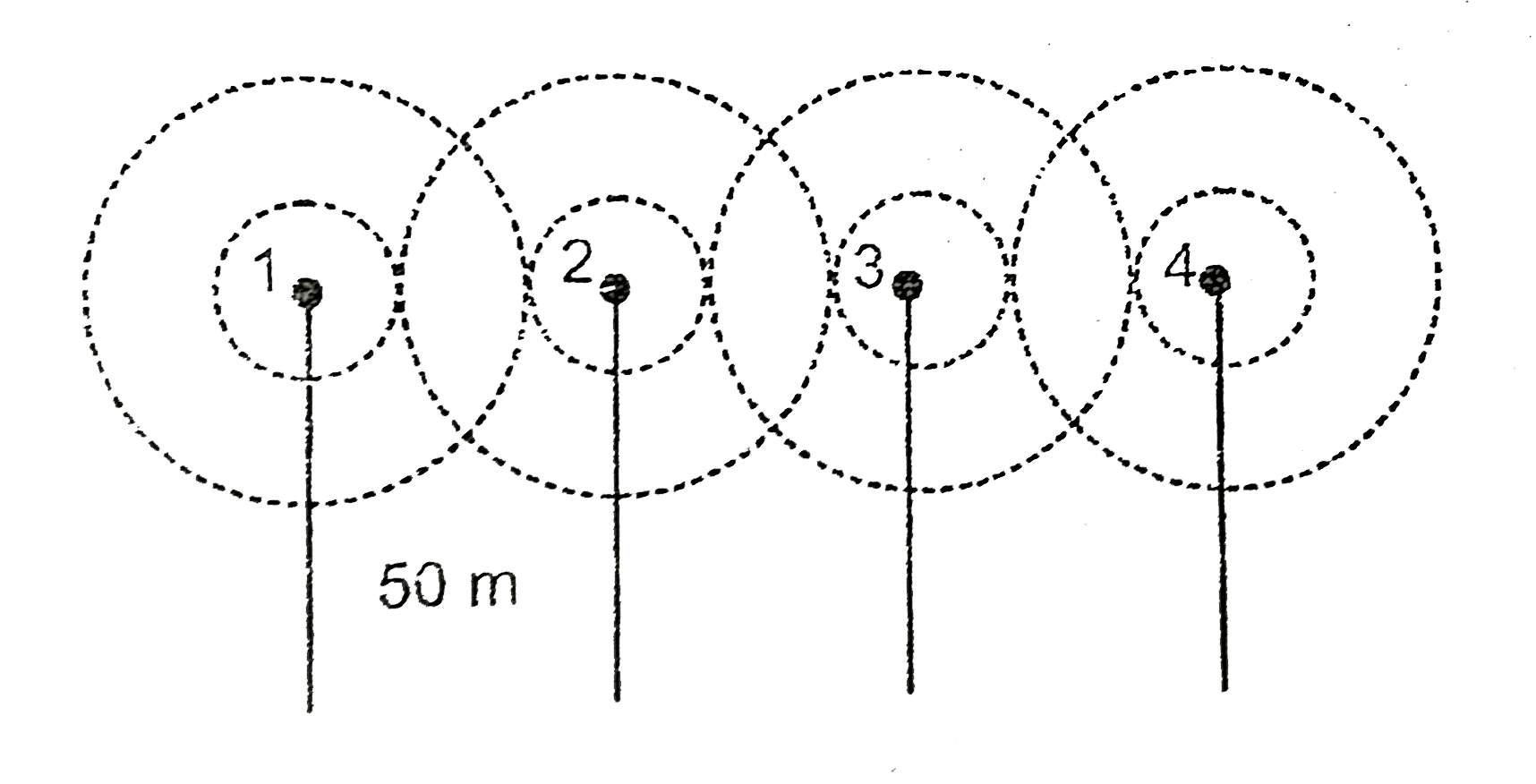The diagram shows a dish antenna which is used to receive televisiton signals form a satellite. The antenna (signal detector ) is fixed forn of the curved dish .

What is the purpose of the dish ?
Should it be concave or convex ?
Where should the antenna be positioned to receive the strongest possible signals ?
Explain what change you would expect in the signals if a larger dish was used.
The correct Answer is:A
(a) To collect a large amount of TV signals form the satellite (b) Concave ( c) At the forus of the dish (d) Stronger signals will be received
Topper's Solved these Questions
- REFLECTION OF LIGHT BOOK - LAKHMIR SINGH & MANJIT KAURCHAPTER - REFLECTION OF LIGHT EXERCISE - Multiple Choice Questions (MCQs)
1 Videos
- REFLECTION OF LIGHT BOOK - LAKHMIR SINGH & MANJIT KAURCHAPTER - REFLECTION OF LIGHT EXERCISE - Very Short Answer Type Questions
1 Videos
- REFLECTION OF LIGHT BOOK - LAKHMIR SINGH & MANJIT KAURCHAPTER - REFLECTION OF LIGHT EXERCISE - Very Short Answer Type Questions
1 Videos
- MAGNETIC EFFECT OF ELECTRIC CURRENT BOOK - LAKHMIR SINGH & MANJIT KAURCHAPTER - MAGNETIC EFFECT OF ELECTRIC CURRENT EXERCISE - NCERT BOOK
2 Videos
- REFRACTION OF LIGHTBOOK - LAKHMIR SINGH & MANJIT KAURCHAPTER - REFRACTION OF LIGHTEXERCISE - VERY SHORT ANSWER TYPE QUESTIONS
1 Videos
Similar Questions
Knowledge Check
'Metal dishes'' (Dish Antennas) are used for receiving TV signals from distant communication satellites. These 'Metal Dishes' are :
AConvex reflectorsBboth convex and concave reflectorsCConcave reflectorDConvex refractorsA carrier wave of 2000kHz is used to carry the signal, the length of the transmitting antenna will be equal to
A3mB30mC150mD3000mWhen a low flying aircraft passes overhead, we sometimes notice a slight shaking of the picture on our TV screen. This is due to
I. interference of the direct signal received by the antenna with the weak signal reflected by the passing aircraft.
II. change of magnetic flux occurring due to the passage of aircraft induces emf across wings of air-craft. Correct statement(s) is/areAonly IBonly IICBoth I and IIDNeither I nor II
Name the device fitted in the satellite which receives signals from Earth station and transmits them in different directions after amplification.
View SolutionThe diagram shows the sketch of an electrolytic cell used in the extraction of aluminium.

At which electrode (A or B) is the aluminium formed?
View SolutionTwo radio stations broadcast their programmes at the same amplitude A and at slightly different frequencies ω1 and ω2 respectively, where ω1−ω2=103HzA detector receives the signals from the two stations simultaneously. it can only detect signals of intensity ≥2A2.
(i) Find the time interval between successive maxima of the intensity of the signal received by the detector.
(ii) Find the time for which the detector remains idle in each cycle of the intensity of the signal.
View SolutionA radio station broadcasting at a frequency of 1500kHz gerertes a directional beam by using an array of 4 point ource antennas driver in phase with each other by the same transmitter. The antennas are arranged along an east west line so that each antenna is 50m from the next one.

(a) In what direction will be radiated signal to greatest ?
(b) How mcuh signal radiates in east west direction.
View SolutionHeight h(400=m) from the ground at place A, from which the readiowaves can be transmitted. There is a receive at station B on earth at a distance d(=125km), which can receive the signal from station A. The radiowaves can reach the station B, either through earth's atmosphere or through satellite. There are four main layers in earth's atmosphere named D,E,F1 and F2 which play effective role in radio communication. The electron density of these layers is 4×108,2×1011,5×1011 and 8×1011m−3. The radius of the earth is 6.4×106m. If the station A sends the T.V. signals, then the maximum area on earth upto which T.V. transmission can be received on earth is (average population density around the tower is 1000 km−2)
View Solution
